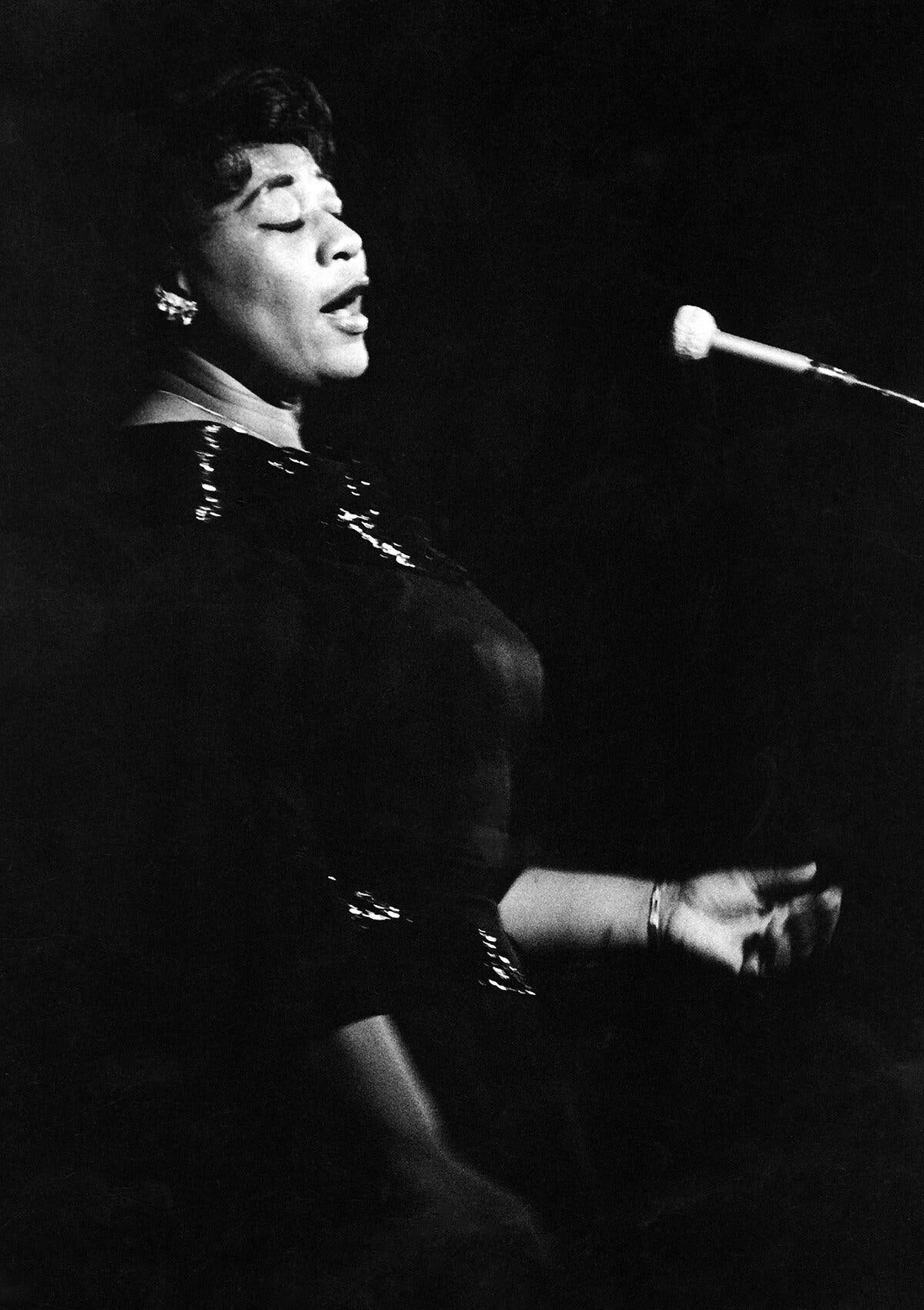
Archive Story: Basin Street
Archive Story: Basin Street
The rediscovery of Basin Street began when a collector approached the Vivian Springford Archive with a large painting from the early 1960s. Its subject — a woman mid-song, head tilted toward a microphone — had long been admired, yet little was known about its origins. Through comparative research, the Archive uncovered a smaller version on rice paper within Springford’s own holdings. The two works — study and canvas — revealed a clear lineage from observation to abstraction.
Then came a deeper revelation: the singer depicted was not anonymous, but Ella Fitzgerald, performing at the famed Basin Street East jazz club in New York. Once recognized, everything fell into place — the title, the rhythmic brushwork, the pulse of sound translated into motion. Springford had painted not simply a performer, but the embodiment of rhythm itself.
The pairing of the two works reframed Basin Street as a key transitional moment in Springford’s career. The delicate monochrome study distilled the structure of the image; the larger canvas expanded it into color and movement. Together, they chart her shift from figuration to abstraction — from the tempo of music to the gesture of paint.
Top composite: archival materials & study
Poster for Springford’s 1963 Preston Gallery exhibition (top left). Exterior of the Preston Gallery townhouse (top right). Invitation for the group show including Springford (bottom left). Hand-painted study for the exhibition poster (bottom right).
Springford’s Basin Street (rice paper mounting), c. 1962–63
Acrylic on rice paper. Collection Vivian Springford Archive. The first version of Basin Street, a monochrome study later expanded on canvas. Its rhythmic brushwork captures the pulse of live performance.
Collection Barry Chaiken. In the final canvas, Springford simplified and intensified the composition, bringing the singing figure and microphone closer to the viewer — a portrait of sound turning into gesture.
In retrospect, Basin Street stands as both homage and threshold. It bridges her early years as a portraitist and her later evolution into pure abstraction. The energy that once animated her drawings of musicians and dancers would soon reappear in the calligraphic gestures, chromatic pools, and cosmic arcs that define her mature work.
What began as a collector’s inquiry became a story of rediscovery — and a portrait of Ella Fitzgerald transformed into something larger: a vision of sound made visible, where music becomes gesture and color carries the voice.
Basin Street East, New York City, 1960s
The marquee of the legendary jazz club that gave Springford’s painting its name — a gathering place for performers such as Ella Fitzgerald, Miles Davis, and Duke Ellington.
Ella Fitzgerald performing “Basin Street Blues,” 1963, Basin Street East, New York City
Fitzgerald’s performance photograph illuminates the source image for Springford’s painting — the moment of voice and movement translated into color and form.





